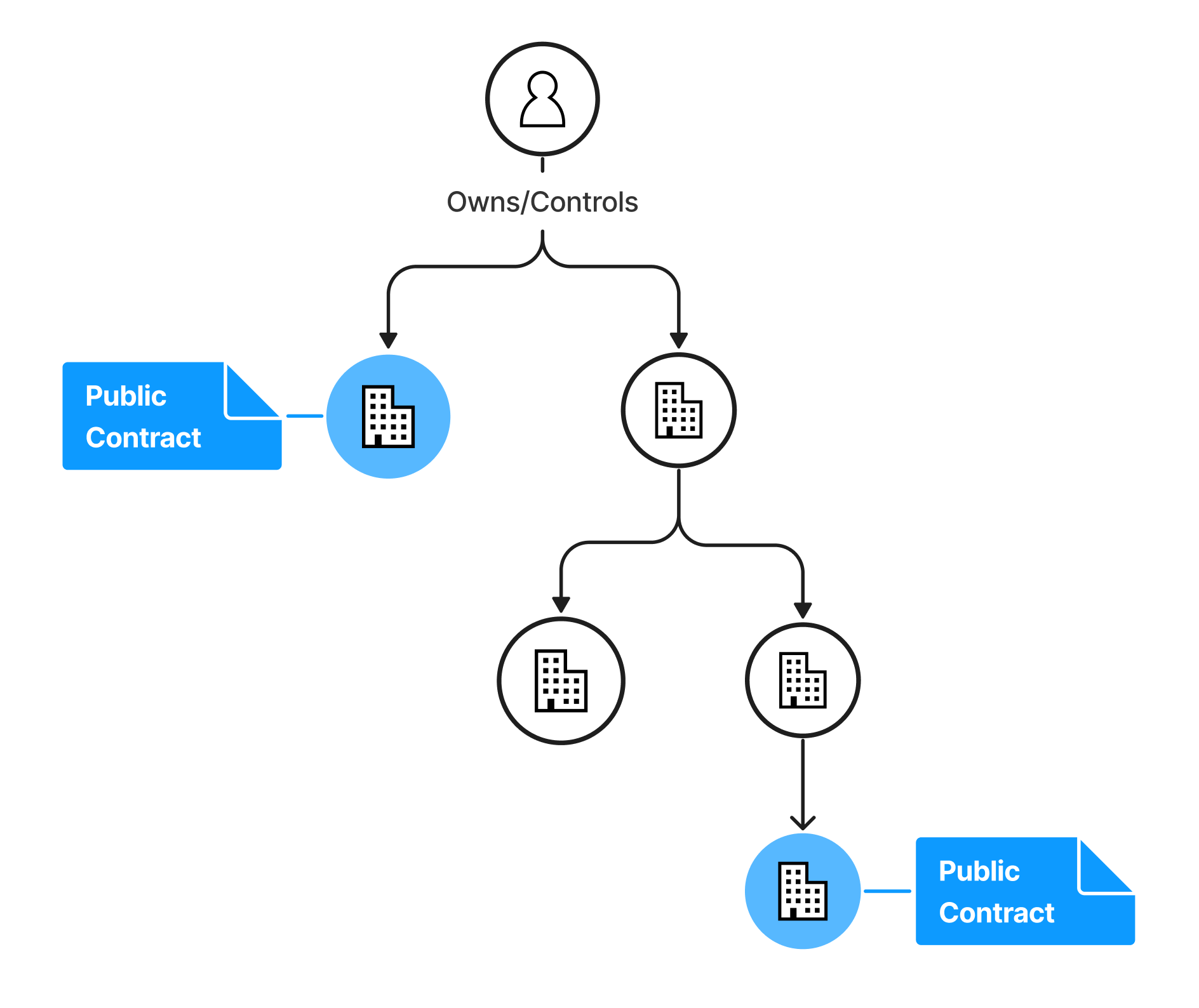Spotting risks by combining beneficial ownership, public procurement and sanctions data

Combining high-quality beneficial ownership data with other datasets can be crucial to help detect potential risks during customer due diligence, know your customer checks and sanctions screening processes.
Whether you are trying to detect the involvement of sanctioned individuals in ownership chains, or understand which individuals or corporate networks have been awarded a large number of public procurement contracts, spotting such risks relies on how you can best connect information across multiple datasets.
To demonstrate how the Beneficial Ownership Data Standard (BODS) can support these and many more use cases, we’re unveiling a new risk detection project.
This proof-of-concept tool demonstrates the use of BODS data in a Resource Description Framework (RDF) format. RDF is a general framework for representing interconnected data on the web. This builds on previous work to create a BODS RDF vocabulary.
Open Ownership’s BODS data is converted into this linked data format. This way, the BODS data can be combined with public procurement data published in line with the Open Contracting Data Standard as well as with sanctions data published by OpenSanctions using the FollowTheMoney data model and the Offshore Leaks database from the International Consortium of Investigative Journalists.
The resulting data can then be queried using RDF/SPARQL (a query language used to express queries across diverse data sources) to leverage its graph nature for a series of risk and compliance use-cases. Both individuals and companies can be treated as targets.
For each of the use-cases explored below, we’ll explain how we’ve tackled the question, provide full technical notes, highlight discovery queries and showcase video demonstrations of our easy-to-understand, proof-of-concept demonstration tool:
1) Learning which companies have been awarded public contracts
By combining high-quality beneficial ownership and public procurement data, we can look for a target individual or entity and find any companies that they own or control (directly or indirectly) which have been awarded public contracts. This can bring greater visibility and transparency over larger corporate groups in terms of their reliance on public procurement.
Full details: Technical notes | Discovery query | Video demonstration
2) Detecting sanctioned individuals or politically exposed persons
A common use-case in risk management is whether a target is subject to any sanctions, or if they are a politically exposed person (PEP). By leveraging the inherent graph nature of the BODS ownership model, we are able to push this one step further and identify what we called indirect risks: third parties connected to a target which are themselves sanctioned or count as a PEP.
Full details: Technical notes | Discovery queries | Video demonstration
3) Spotting risks associated with a registered address
The registered address for a legal entity can provide insights as to whether there is a network of companies related to a target. There are two areas which we focused on in this project in relation to registered addresses:
- Identifying sanctioned entities which share an address with a target (for which no direct risks are identified). This is using the OpenSanctions dataset.
- Identifying entities listed in the ICIJ Offshore Leaks database, which share an address with a target.
Full details: Technical notes | Discovery query | Video demonstration
4) Exploring full beneficial ownership chains to learn about ultimate beneficial owners, parent companies and subsidiaries
Even without combining it with other datasets, high-quality beneficial ownership data can be used to build greater understanding of the connections and networks relating to individuals or companies. The BODS data model can be leveraged through RDF to enable several risk use-cases specific to ownership and control:
- tracing ownership chains to ultimate beneficial owners;
- identifying the ultimate parents of companies; and
- learning more about subsidiaries.
Full details: Technical notes | Discovery queries - UBO / Parent companies / Subsidiaries | Video demonstrations - UBOs / Parent companies / Subsidiaries
For those seeking to understand more about the technical approaches taken for this project, we have provided notes on data modelling and system design alongside instructions about running your own version of the application. You can also read more about the BODS RDF vocabulary on our public Github repository.
To share feedback about this project or to connect with the data support team at Open Ownership, please email [email protected].
Publication type
Blog post
Topics
Procurement,
Beneficial Ownership Data Standard,
Open Ownership Register
Sections
Implementation,
Technology
Open Ownership Principles
Sanctions and enforcement,
Structured data